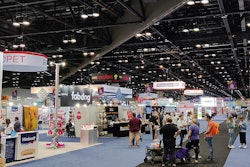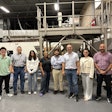
Equipment suppliers to the pet food industry are facing the same challenges and global upheaval as everyone else — perhaps even amplified because they tend to work with multiple industries and so must handle these challenges from more than one industry angle. Two of the top challenges among those serving pet food are current supply chain woes and a growing need from customers for equipment to be flexible in order to meet production needs.
Supply chain: Disruptions mean increased project lead times, equipment delays
Current supply chain challenges are by no means settled into predictability, and no one quite knows how long this flux is going to last. Globally, that means a lot of opportunity for delays and the need for everyone, equipment suppliers included, to stand ready to find workarounds or deal with extended timelines.
“There are real disruptions in availability of parts and components we use to manufacture our equipment that is pushing lead times out further, causing delays,” said Chuck Johnson, director of sales for National Bulk Equipment, which creates custom processing and packaging equipment, systems and projects. “Just the whole management of backlog of equipment orders in-house and increasing demand has led to some speedbumps. Realistically there’s still quite a lot of unknowns, so we have been adjusting schedules and pushing out lead time on projects, as is everybody else including the vendors we buy from.”
Many companies tabled new projects in 2020 as the initial months of the COVID-19 pandemic brought uncertainty to every corner of commerce. In 2021 and so far in 2022, those projects are back in play — and companies want to be able to produce quickly.
“Currently the biggest challenge is management of supply chain alongside our customers’ needs to quickly satisfy demand in the marketplace,” said Jason Stricker, vice president of sales and marketing for Shick Esteve, which engineers full-system automation solutions for the food industry.
Right now, managing the supply chain might mean making adjustments mid-project, and of course everything has a price.
“We’ve done some large-scale projects with partners of ours in the pet industry where rapid changes in the last year-and-a-half or so have caused us to reevaluate the pricing in the middle of the project,” said Johnson. “We’re trying to balance pricing concerns with keeping the projects moving. And when you think you have things figured out, there’s always a different variable in the supply chain you weren’t planning on that becomes the latest challenge of the day.”
Flexibility: Handling a diversity of product with efficient equipment
As premium-level pet food trends continue to grow, customers of equipment suppliers are looking for machines that can do more with less — handle a variety of ingredients, produce a variety of food types and manage a variety of packaging.
“High-quality food and packaging is now seen as a status symbol, which we have to design, fill, package and handle very carefully,” said Wim Kruikemeijer, subsidiary manager for Cama Group (which engineers and produces high technology seconday packaging systems) and senior coordinator for the Petfood Competence Network. “Not only does the primary packaging have to look good, but we also have to consider multi-flavor secondary packaging, which places extra pressures on the machines.”
Not unexpectedly, being able to meet top trends such an increased focus on safety (human and food) or sustainability is part of the flexibility needs of those looking for an equipment supplier.
“While not really a challenge for qualified suppliers, I would say that food safety and hygienic design are a constant focus and ever-evolving need,” said Stricker. “For pre-extrusion I would say that the most frequent requests involve needs in the liquid ingredient or slurry-type systems and increased accuracy and repeatability for dry ingredients.”
Sustainability is really a complex web of needs that touches every aspect of pet food production.
“Sustainability is ever-present, but we can’t just look at it in terms of materials or reducing plastics; we have to consider food waste too,” said Kruikemeijer. “It is responsible of us to investigate ways of helping consumers reduce waste, which could be through portion-size packaging, which although it reduces food waste also increases packaging. It’s a balancing act. We also have to increase machine efficiency to drive down production waste. Quick changeovers mean lower dwell times, so there is less chance for the ingredients to spoil.”
Equipment companies working in a variety of industries may have a leg up when it comes to meeting these needs, as they can take their experience with a different industry and cross apply it as necessary to pet food.
“What we’re seeing in terms of the equipment we manufacture for the pet food industry — and this was the trend even before the pandemic, but it seems to be taking off at a faster pace — is a greatly increased push on the type on construction,” said Johnson. “The sanitary construction, the food grade construction — there’s virtually no difference between a human food bulk bag discharger and a pet food bulk bag discharger that we manufacture. You could walk through our shop and not tell one from the other because there’s really been [a merging of needs] in terms of the materials, the construction, the finishes, the overall clean design principles that we’d use on the equipment itself.”
Challenges and all, equipment suppliers seem to see plenty of opportunity ahead in terms of partnering with the pet food industry.
“The market is dynamic and this is driving ideas to us, which is then giving us the opportunity to be innovative and forward thinking,” said Kruikemeijer. “This market is incredibly interesting, and we haven’t seen the half of what’s to come yet.”
Pet food labor challenges and automation solutions

















